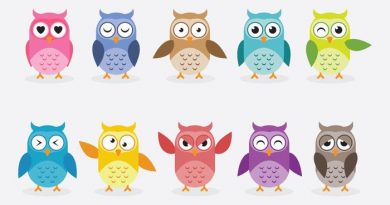St. Patrick’s Day. Release your inner Leprechaun
The power of listening and reading literature. The story of Leprechaun
Source: v=tYa6OLQHrEc&t=284s The old Branch.
@oposiciones_ingles #uk #usateachers #instateacher #knowledge #resources #englishlearning #instateachers #oposicion #oposito #learnenglish #storytime #knowledge #readingtime #roadtoyourpost #news #goldenopportunity #society #people #noticias #uk #usa #opositandoytrabajando #docente #docentes #oposicionesingles #empowerment #kids #children #education #teacherproblems #opogram
Have you ever seen a Leprechaun? Culture, literature and songs in the FL classroom.
Children´s literature in english. Didactic techniques to achieve oral comprehension, to initiate and encourage reading habits & to appreciate the poetic function of language.
1. Introduction
• Communicative competence definition.
• Natural route for learning any language goes through reception before production (receptive skills are nor passive). Relevance of receptive skills for effective FLL.
• Children´s literature to approach listening and reading.
• Development of reading habits.
2. Children`s literature in English
• Definition. Role of technologies (Barone 2011)
• Factors for the development of children´s literature (rise of the middle class)
• Brief history: 19th century (flourishing of children´s literature…examples). 20th century (comics, entertaining stories…). Current trends (Barone, 2011) →expansion of topics, illustrations…
• Typology of children´s literature (adults´ books, unmarked audience, traditional, fantasy, adapted classics.
• Using literature in the FL class: (Van 2009) Advantages (meaningful contexts, cultural awareness…
• Children’s literature can integrate the four skills:
3. Oral comprehension, the poetic function of the language
• Defining listening (Rost, 2005) complex cognitive process (hearing, categorization of sounds, word recognition and comprehension)
• The mental demands in active listening are clearly meaning-focused instead of language-focused.
• “Input Hypothesis” by Krashen (i+1).
• Comprehension strategies: intelligent guessing (predicting, inferring from the context…)
• Staging listening and types of activities (pre-while-post)
• The poetic function of the language (can be worked in the FL class through activities related to poems, songs, chants, rhymes…). Practical proposal (food poem, pizza chant, five senses poem…)
4. Development of reading habits
• D. _____+ block number_______(regional curriculum) (Comprehension of written texts).
• Principles to develop a taste for reading (usefulness, active and joyful, supported, organisation of reading corner, meaningful and purposeful activities)
• Reading techniques (skimming-extensive reading and scanning-intensive reading)
• key strategies to support and motivate students towards reading: word learning strategies, sentence and discourse level strategies (inferring, visuals), take advantage of games (jumbled texts, e-mail friend, pass the message…)
5. Conclusion
• The integration of literature in FLT requires devising appropriate sequences of work in which students can apply listening and reading strategies.
• Strategies shall be much more effective if they are embedded in joyful activities in which students perceive the usefulness of the FL.
• By getting students to discover FL literature, practise receptive skills and play, we shall be contributing to the development of our learners´ communicative competence.
|
The song as a poetic vehicle and as literary creation in the English class. Typology of songs. Techniques to use songs for phonetic, lexical and cultural aspects. |
1.- Introduction
Main aim in FLT: Communicative competence. This requires appropriate materials and resources. Songs and music are ideal strategies to motivate students, present language or create a context. There are plenty of benefits in the use of songs for FLT, as we shall see along this paper.
2.- The song as a poetic vehicle and as literary creation in the English Class.
Songs are ideal resources to present authentic and fun input. Its use is in line with the Theory of Multiple Intelligences.
Benefits in using songs: Linguistic (present or recycle lexis, enjoyable repetition, work on pronunciation); psychological (motivating power, non-threatening environment); cognitive (improve concentration, predict what comes next, reinforce meaning); socio-cultural (develop knowledge of English-speaking countries).
- Poetic function of the language (meaning in a song…example).
- Selection criteria: age, linguistic difficulty (ZPD).
- Staging: Pre-while and post (explanation and example).
- Examples of strategies (predicting, inferring meaning from the context).
3.- Typology of songs
- Action songs and rhymes. Effective for Infant and Primary. Normally associate language and action (TPR). Rhymes are usually performed with fingers or hands, especially useful to work on sounds and prosodic features.
- Nursery Rhymes. Poetry for children, not specifically for teaching purposes.
- Limericks and Riddles. Popular poetry, usually with a humorous element that may include archaic language. Riddles include solving a problem.
- Traditional and Pop songs. Use of pop songs can be highly motivating, although they have not been designed for FLT and thus, language level may be too high.
Examples.
4.- Techniques to use songs for phonetic, lexical and cultural learning
- Phonetic aspects of rhythm, stress and intonation in the four content blocks. Goal of teaching pronunciation (Goodwin: understand and be understood, build their confidence, to monitor their speech based on input from the environment); intelligibility (Harmer).
- Lexical competence: Nation, knowing a word implies knowing the form, meaning and how to use it). Steps (convey meaning, check for comprehension, consolidation. Examples)
- Cultural learning. Socio-cultural aspects in legal framework (content blocks). Songs are ideal resources to present and practise cultural learning. Practical examples depicting cultural content or treatment.
5.- Conclusion
Songs as valuable resources to provide real input. Motivating power. Need to integrate them in the curriculum to develop the learners´ communicative competence.
More information
Guess what!
The shamrock is a popular Irish symbol, but it is not the symbol of Ireland. As early as the medieval period, the harp has appeared on Irish gravestones and manuscripts. However, it is certain that the harp was popular in Irish legend and culture even well before that period.
Since the medieval period, the harp has represented the nation. King Henry VIII used the harp on coins as early as 1534. Later, the harp was used on Irish flags and Irish coats of arms. The harp was also used as a symbol of the Irish people during their long struggle for freedom. Starting in 1642 the harp appeared on flags during rebellions against English rule. When Ireland became an independent country in 1921, it adopted the harp as the national symbol.
————————————————————————————-
GEOGRAPHICAL, HISTORICAL AND CULTURAL FRAMEWORK OF THE ENGLISH SPEAKING COUNTRIES. DIDACTIC APPLICATION OF THE MOST OUTSTANDING GEOGRAPHICAL, HISTORICAL AND CULTURAL ASPECTS.
Our State legislation, LOMCE 8/2013 and RD 126/2014 28th February establishing the minimum teaching requirements for Primary Education (a reference to the curriculum of the Autonomous Community should be included here) include the knowledge of a foreign language and the development of basic communicative competence as one of the objectives to be achieved along this stage.
Due to the relevance of the sociocultural dimension in order to develop this ambitious goal (communicative competence), RD 126/14 establishes the relations amongst three essential curricular elements: content, evaluation criteria and learning standards; stating that the development of sociocultural and sociolinguistic aspects must be present if the four content blocks. Furthermore, the evaluation criteria, defined as the specific referents to evaluate students´ learning, include the sociocultural and sociolinguistic dimension, stating that learners should identify basic, specific and meaningful sociocultural and sociolinguistic aspects regarding daily life, life conditions, interpersonal relations, behaviour and social conventions, etc.
The relation between these curricular elements (competences, content and evaluation criteria) is further described in Order ECD/65/2015. In this regard, the sociocultural dimension in the teaching of a FL is closely linked to competence number 7, Cultural Awareness and Expression, which refers to the knowledge of different cultural and artistic manifestations; the skills to understand and appreciate the Spanish and Anglo-Saxon cultural heritage, its richness and diversity; and the attitudes that lead to and respect for variety of cultural expression.
Throughout this presentation we shall focus on the sociocultural aspects of English-speaking countries. Nonetheless, analysing all the countries in which English is used as the first language would be an endless task; therefore, we shall refer to the two most outstanding and influential ones: the United Kingdom and the United States of America.
Finally, we shall define some methodological guidelines to integrate sociocultural knowledge within a practical and realistic action-based approach, analysing how the knowledge of the English-speaking countries culture is usually a source of motivation, since students are already familiar with music, films and traditions from those countries.
More information about us:
facebook.com/OposicionesInglesRP/
Twitter: @OposIngles
https://twitter.com/OposIngles
Instagram: https://www.instagram.com/oposiciones_ingles




